360° View - Verax
Quattro 1 Heatsink
Information on
Frostytech's test methodology is available
here. | |
|
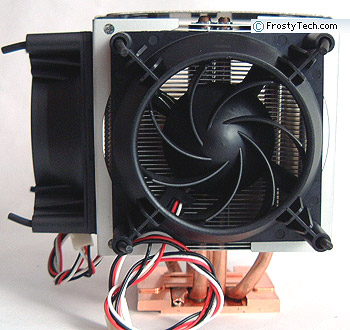 |
The
Heatsink Fan:
The seven bladed impeller on this 25mm
thick fan creates a small amount of airflow and practically zero
noise. Compared to a traditional heatsink, the CAIRdB is pretty revolutionary - but
it is important to keep in mind that this heatsink is
not meant for overclockers - rather zero noise systems. The fan is temperature
controlled to run at 1500-3600RPM (25C-50 C) depending on temperature. The
fan connects to the motherboard via a 3-pin fan header
which supports RPM monitoring. Note the rubber posts used to hold the
fans in place. |
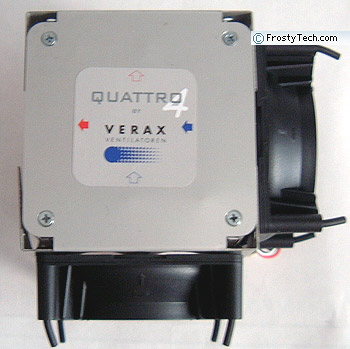 |
Heatsink Top:
The top of the heatsink is essentially bare. A large
aluminum fan shroud attaches to the main unit with a couple screws, the
fans in turn are held in place with rubber posts. Up to four fans can
technically be used with the Verax Quattro 1, though the unit only ships with
two CAIRdb fans. |
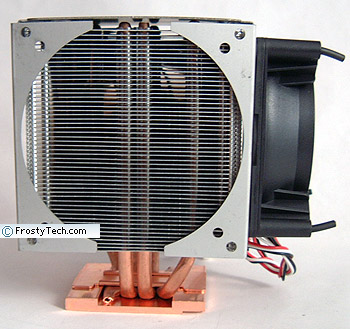 |
Heatsink Side A:
Six, 6mm copper heatpipes join the aluminum fin
section with the copper base of the Verax Quattro 1 heatsink. The base is
6mm thick as well. the cooling fins are roughly 88x85x85mm in size; making
for one rather big cooling unit. The whole system stands 124mm tall.
|
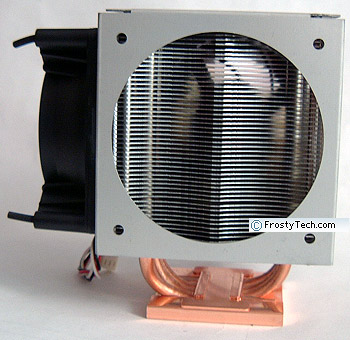 |
Heatsink Side B:
The aluminum fins are ~0.4mm thick and spaced 1mm apart. On two
sides the edges of the fins have been scalloped, leaving the distinct impression that Verax have retrofitted an
existing heatsink platform. The mounting hardware slides in over top of the copper
base, and the heatsink is held down with thumb-tightened brass screws. |
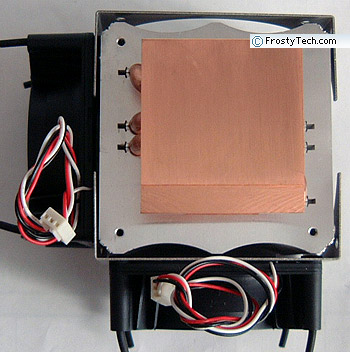 |
Heatsink Base:
The 55mm x 60mm copper base is soldered to
the heatpipes so thermal conductivity is direct as could be expected. The
copper has a sanded finish with a surface roughness of ~64 microinches.
The base is a little wavy, but generally flat. The heatsink is not
intended to be used with socket A processors, yet the base is undercut to
provide relief for the socket cam arm. Curious.
From this angle the profile of the aluminum cooling fins is much
more visible.
|


